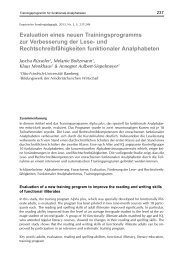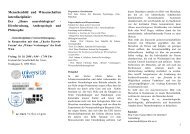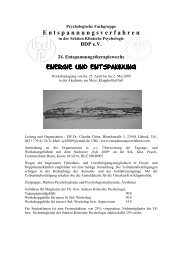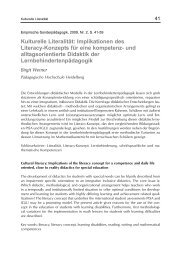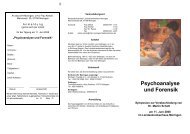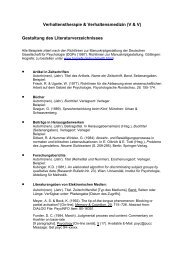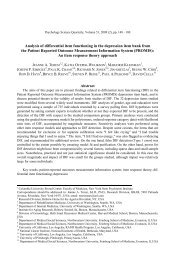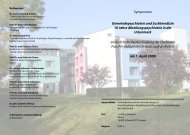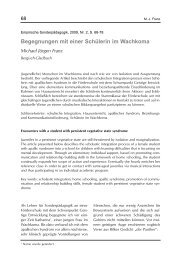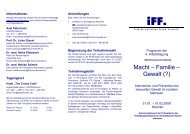Scale construction and evaluation in practice: A review of factor ...
Scale construction and evaluation in practice: A review of factor ...
Scale construction and evaluation in practice: A review of factor ...
You also want an ePaper? Increase the reach of your titles
YUMPU automatically turns print PDFs into web optimized ePapers that Google loves.
<strong>Scale</strong> <strong>construction</strong> <strong>and</strong> <strong>evaluation</strong> <strong>in</strong> <strong>practice</strong> 275<br />
<strong>and</strong> IRT are applied, <strong>in</strong> the other one (Hong & Wong, 2005) only IRT is applied. Vigneau<br />
<strong>and</strong> Bors (2005) <strong>and</strong> Hong <strong>and</strong> Wong (2005) both mention a skewed item response<br />
distribution as an argument for apply<strong>in</strong>g the Rasch model, because it is “<strong>in</strong>sensitive<br />
to the shape <strong>of</strong> the item distributions,” whereas <strong>in</strong> st<strong>and</strong>ard (i.e., l<strong>in</strong>ear) FA, items are<br />
assumed to have a multivariate normal distribution if maximum likelihood (ML) estimation<br />
is employed.<br />
Because studies where both FA <strong>and</strong> IRT are applied are <strong>of</strong> particular <strong>in</strong>terest for the<br />
present comparison, we briefly describe each <strong>of</strong> them. Vigneau <strong>and</strong> Bors (2005) do not<br />
state clearly why they use both FA <strong>and</strong> IRT. It is mentioned that “the IRT model is better<br />
suited for the analysis <strong>of</strong> the dichotomous data.” They do not expla<strong>in</strong> why FA is also<br />
performed, but perhaps they also want results comparable to previous studies. They<br />
perform three separate <strong>factor</strong> analyses: on product-moment, tetrachoric, <strong>and</strong> corrected<br />
phi-correlations (phi/phi max ), which, as they note, have all been used before for the scale<br />
under <strong>in</strong>vestigation. In this study, based on the FA results, it cannot be decided whether<br />
the data are one- or two-dimensional, whereas the IRT analysis <strong>in</strong>dicates that a unidimensional<br />
model does not describe the data well.<br />
Clark, Antony, Beck, Sw<strong>in</strong>son, <strong>and</strong> Steer (2005) apply IRT at an exploratory stage <strong>of</strong><br />
scale <strong>construction</strong>. They determ<strong>in</strong>e item discrim<strong>in</strong>ation at various levels <strong>of</strong> the latent<br />
variable by graphically exam<strong>in</strong><strong>in</strong>g item response functions. Although not explicitly mentioned,<br />
from the references given it can be deduced that Ramsay’s (2000) Testgraf model<br />
is used here. The structure <strong>of</strong> the scale is <strong>in</strong>vestigated with a pr<strong>in</strong>cipal component analysis.<br />
Clark et al. do not elaborate on their reasons for apply<strong>in</strong>g both FA <strong>and</strong> IRT.<br />
Wang <strong>and</strong> Russell (2005) perform a differential item function<strong>in</strong>g (DIF) analysis, i.e., an<br />
<strong>in</strong>spection <strong>of</strong> whether items function equivalently <strong>in</strong> different populations <strong>of</strong> respondents.<br />
They describe FA <strong>and</strong> IRT as “complementary approaches,” with IRT better suited for<br />
test<strong>in</strong>g equivalence <strong>of</strong> item parameters (see also Meade & Lautenschlager, 2004), <strong>and</strong> FA<br />
more appropriate for multidimensional model test<strong>in</strong>g. It is remarkable that the CFA is<br />
applied on product-moment correlations rather than polychoric correlations, s<strong>in</strong>ce the<br />
latter would be equivalent to the graded response IRT model that was used. In fact, this<br />
relationship is never mentioned <strong>in</strong> the study.<br />
S<strong>in</strong>ce model choice is not explicitly motivated <strong>in</strong> the majority <strong>of</strong> the studies, we next<br />
discuss a number <strong>of</strong> study characteristics – <strong>in</strong>clud<strong>in</strong>g aims, some descriptive statistics,<br />
<strong>and</strong> s<strong>of</strong>tware use – <strong>in</strong> the hope <strong>of</strong> reveal<strong>in</strong>g some implicit motivations.<br />
Characteristics <strong>of</strong> the data <strong>and</strong> applied models<br />
Comparison <strong>of</strong> characteristics <strong>of</strong> FA <strong>and</strong> IRT studies<br />
We classify the 41 studies <strong>in</strong> our analysis <strong>in</strong>to five types, based on their primary aims:<br />
<strong>evaluation</strong>, new scale, translation, DIF, <strong>and</strong> short form. In 18 <strong>of</strong> the studies (44 %), an<br />
exist<strong>in</strong>g scale is evaluated. The focus <strong>of</strong> these studies is usually on the latent variable<br />
structure <strong>of</strong> the data, exam<strong>in</strong><strong>in</strong>g which items are substantially associated with each other,



